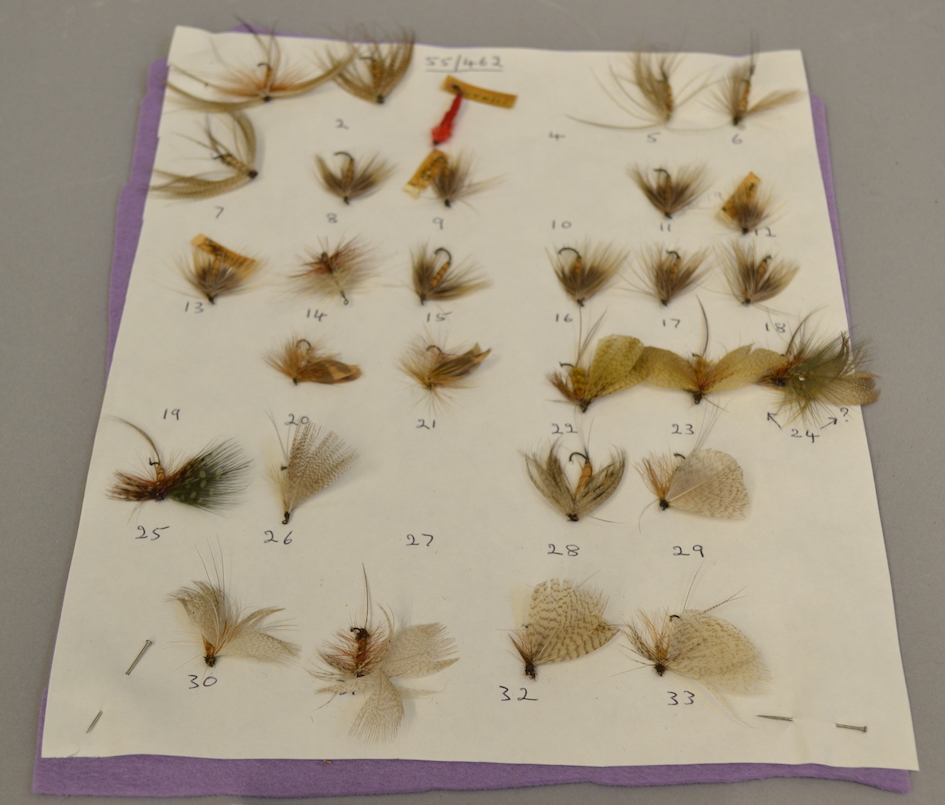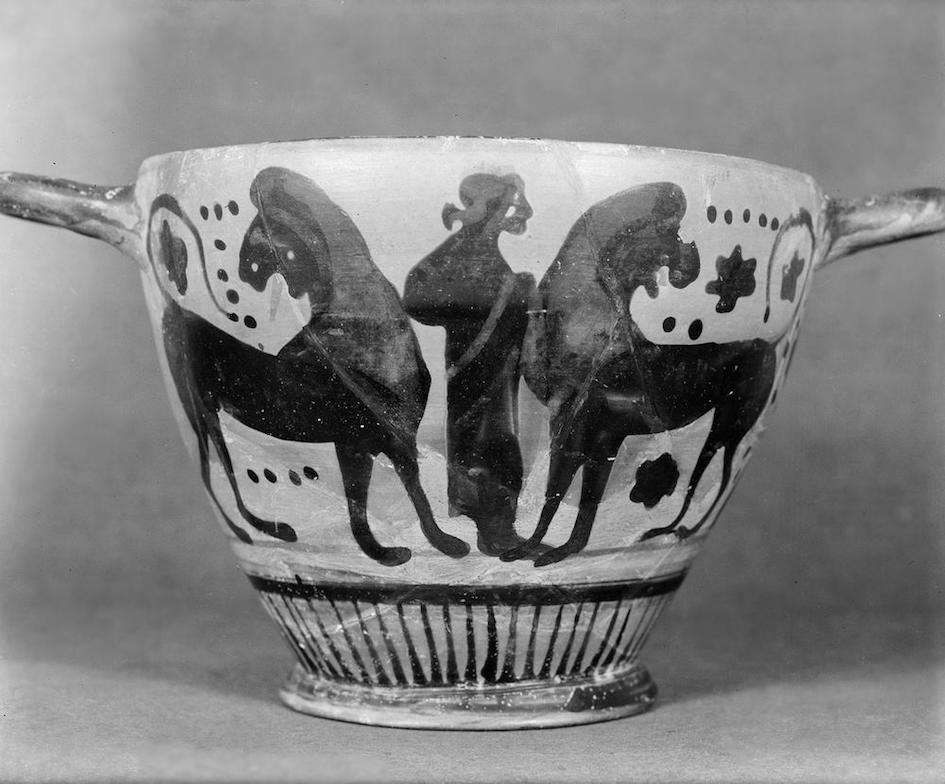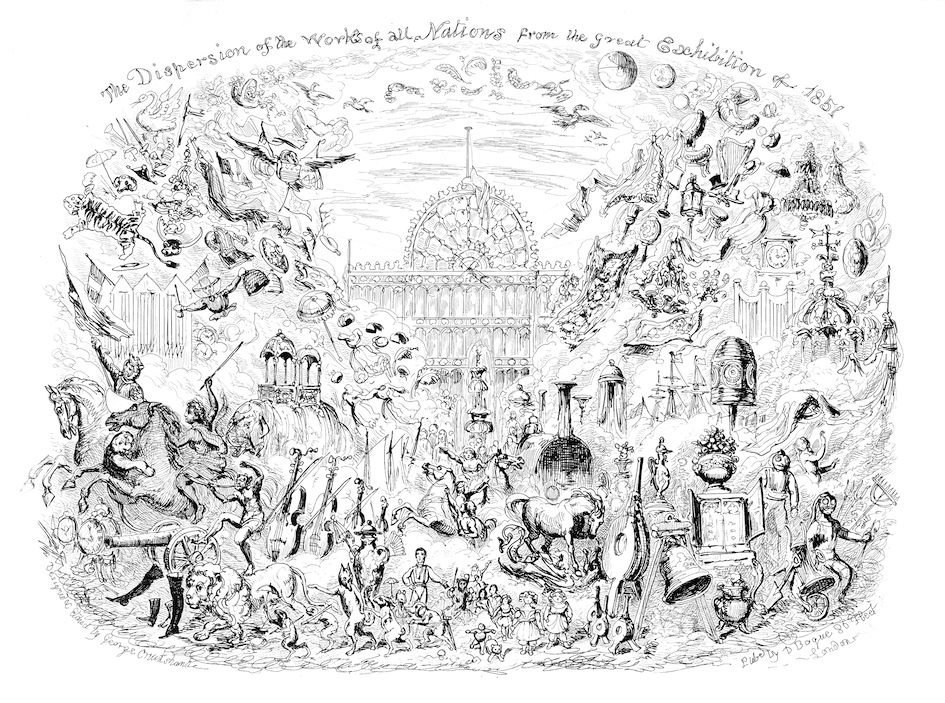“The Merry Month” – 12 items for May Day
The last month of Spring, May is traditionally a time of renewal and new beginnings. So it only seems appropriate to launch this new website on May Day.
Bringing all the University of Reading’s museums and collections together, we looked no further for a theme for this online exhibition. It showcases the rich and diverse collections accessible to students, staff and the general public.

Mayday, Mayday, Mayday
Mayday is the word used around the world to make a distress call via radio communications. It signals a life-threatening emergency and must be used three times in a row.
The procedure was developed in 1921, prior to which the morse code call SOS was the international distress signal. This distress signal features in Ladybird Books’ Great Inventions.
To learn more about the Ladybird Books Collection click here.
Credit line - Special Collections - © Ladybird Books Ltd, 1961

Morris Dancers at Thaxted, Essex
A form of English folk dance, Morris Dancing is traditionally associated with May Day. Based on rhythmic stepping the dancers are accompanied by music and bells, which are usually attached to their shins.
The dancers may also use sticks, swords or handkerchiefs during their performances.
To learn more about Morris Dancing click here.
Credit line - Museum of English Rural Life, P TAR PH3/2/8/7/10

Beltane
Held on 1 May, between the spring equinox and summer solstice, the Celtic festival of Beltane honours the peak of spring and the upcoming summer.
Traditionally marking the beginning of the pastoral summer season, fires are lit at Beltane. These bring protection, purification and fertility over the coming season.
This painting by Elizabeth Talbot is part of a series highlighting the four different seasons. To learn more about the University if Reading’s Art Collection click here.
Credit line - UoR Art Collection - UAC/10344. © Elizabeth Talbot

Mayday Tree
Prunus padus, known as bird cherry, hackberry, hagberry, or Mayday tree, is a flowering plant in the rose family Rosaceae.
Native to northern Europe and Asia, the average life expectancy of the Mayday tree is 30 years.
The tree’s small black fruit are attractive to birds and can also be used in jams, as a flavour in alcoholic beverages and in traditional medicine.
To learn more about the Mayday Tree and other plant specimens held in the University of Reading’s Herbarium click here.
Credit line - Museum of English Rural Life - SR OSS PH5/C7

Mayfly
The Mayfly, part of the Ephemeroptera order, are most common around freshwater wetlands. Adult mayflies have very short lives, with females typically only lasting a few hours, as their sole purpose is to reproduce and lay their eggs.
A favoured food for Brown Trout and Atlantic Salmon, Mayflies are often used as fishing lures.
To learn more about specimens held at the Cole Museum of Zoology, click here.
Credit line - Museum of English Rural Life - 55/462/1-51

Ephemera
The family name of the Mayfly, Ephemeroptera, comes from the Greek word ephemera meaning “something of no lasting significance”.
We also use the word to describe paper items that were originally meant to be discarded after use but have since become collectibles.
The University has magnificent ephemera throughout its collections, including the Maurice Rickards Collection of Ephemera housed in the Centre for Ephemera Studies within the Department of Typography & Graphic Communication.
Credit line - Centre for Ephemera Studies - TYP CES MR

Artemis Mounichia, the Ancient Greek goddess
During Ancient Greek civilisation, Athens celebrated the Mounuchia Festival around the time of 1 May. Honouring the goddess Artemis Mounichia, this festival commemorated the victory of the Greek fleet at Salamis.
The patron of young children, childbirth and wild animals, a temple to Artemis was located near to this battle site.
This Boeotian black-figure skyphos, shows Artemis between lions. To learn more about Artemis and the other Greek and Roman gods, click here.
Credit line - Ure Museum - 27.4.11

May Hill Sandstone
May Hill, situated between Gloucester and Ross-on-Wye, was named after the May Day celebrations which take place there at dawn each year.
A Site of Special Scientific Interest, the submit of May Hill is topped with trees planted in 1887 to mark Queen Victoria’s Golden Jubilee.
This sample is part of the sandstone and siltstone known as the May Hill sandstone.
To learn more about the University of Reading’s Geology Collection click here.
Credit line - Geology Collection - Geology Sed.17

The Great Exhibition 1851
1 May 1851 saw the opening of the Great Exhibition in the Crystal Palace, London. Organised by Prince Albert and Henry Cole, the Great Exhibition was designed to celebrate industrial technology and design.
With half the space used to display items produced in Britain and her Empire, and the other half containing exhibits of foreign goods, it was a truly international event. This illustration by Cruikshank showcases the variety on display in the Great Exhibition.
To learn more about the Great Exhibition click here.
Credit line - Special Collections - Great Exhibition Oversize 19

Postage Stamps
1 May 1840 saw the launch of the postage stamp. The original Penny Blacks, featuring an image of the young Queen Victoria, were printed by Perkins Bacon.
Over 100 years later, Victoria’s great-grandson approved these ‘Victory’ postage stamps in 1946. Designed by H. L. Palmer, a staff artist of Harrison & Sons Ltd., the King’s head is surrounded by a tractor, a house, a factory, and a ship.
To learn more about the aesthetics of the Postal System click here.
Credit line - Museum of English Rural Life, 2010/147

International Workers Day
1 May is International Workers Day. Chosen in 1889 as a day in support of workers; it also commemorates the 1886 Haymarket Affair, an initially peaceful protest of workers striking for an eight-hour work day.
These are plaster casts of Joseph Arch’s hands. Arch was the president of the National Agricultural Labourers Union (1872-1892), the first successful union to be established.
To learn more about the International Workers Day in Germany click here.
Credit line - Museum of English Rural Life - 75/16/1-2

The Maypole
The earliest evidence of a Maypole in the UK, comes from a poem written by Gryffydd ap Adda ap Dafydd in the mid-14th century.
The central point of a dance, performed by boys and girls holding the end of ribbons. The Maypole is eventually encased in these ribbons, which are woven together throughout the dance.
This version of the Maypole and its dancers were made by the Mewes Knitters.